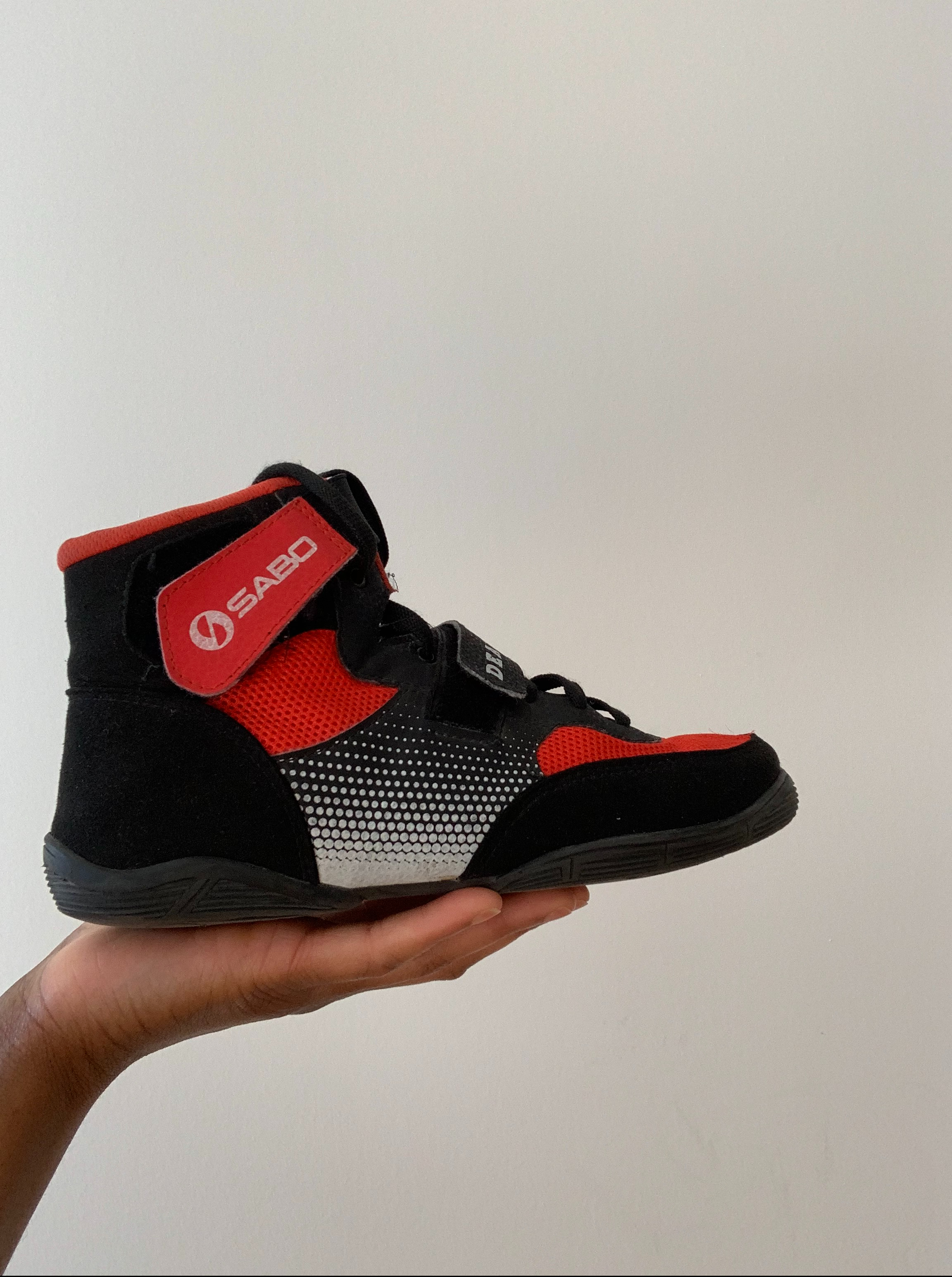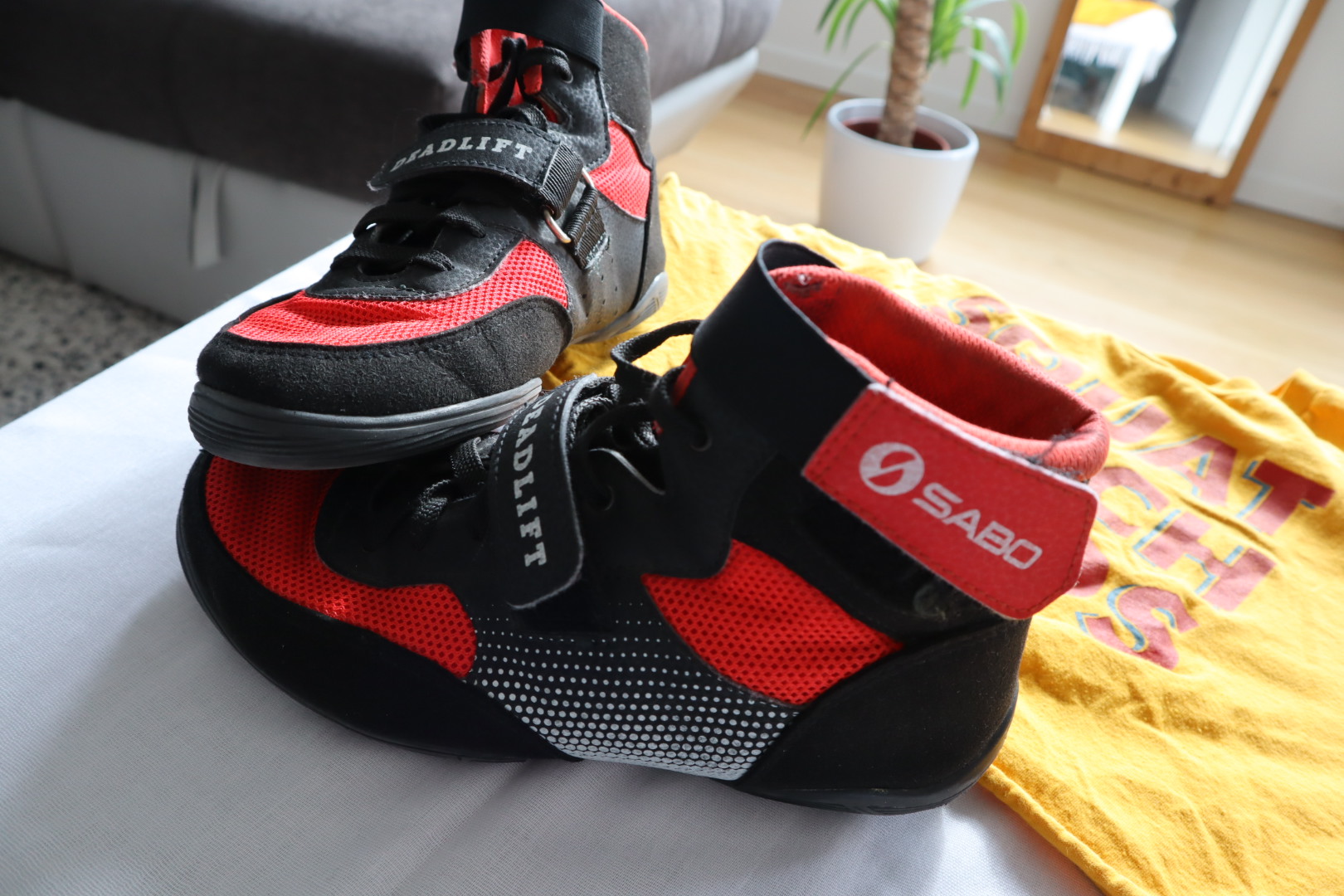
For powerlifting, the shoes that you wear are just as important as the belt that you choose to buy. The deadlift is one of the most popular lifts. It recruit a lot of muscles in your lower body and back. One of the key techniques for deadlifting is shortening the range of motion so you can effectively pull more weight. To do this, you need to have a shoe that keeps your foot as close to the ground as possible.
By wearing other shoes such as ordinary trainers and running shoes, you are short-changing yourself. With proper technique and form, you’ll be able to lift heavier weights and build strength. Here is everything that you need to know about choosing the correct deadlift shoes for powerlifting. Including, The Benefits of Deadlifts Shoes and What You Should Look For In Deadlift Shoes. Moreover, Why You Shouldn’t Wear Other Shoes, Whether You Should Deadlift In Shoes or Barefoot?
The Benefits of Deadlift Shoes
Powerlifting in deadlift shoes has so many benefits that is not only reserved for powerlifters but anyone who likes to lift.
- Improves stability and balance
When you are pulling heavy weight off of the ground, your stabilty is one thing that you cannot afford to compromise. By ensuring that the soles of your foot have complete contact with the floor, you can improve your stability. The soles of deadlift shoes are flat and hard. This provides you with a strong foundation for your feet to keep you steady whilst supporting you on the ground. This also helps you to optimise your set-up and performance of the lift. Most deadlift shoes come with a strapped collar to keep your ankle secured and supported throughout the lift. This is such a huge benefit for those who prefer sumo deadlifts over conventional deadlifts.
2. Shortens range of motion
For powerlifters, the aim is to lift as heavy as possible with the shortest range of motion. The hard and flat soles of deadlift shoes keep you as close to the ground as possible. For example, you wouldn’t wear squat shoes for deadlifts because they have a heel which adds more distance between you and the bar. It might not seem as much now. However, when you are attempting a 1 rep max, that extra heel will become much more noticeable.
Protection Benefits of Deadlift Shoes
3. Provides foot support
The optimisation of foot support can make or break a deadlift. The key points of your foot are the ankle and the middle part of your foot. Deadlift shoes provide support for these two key points to ensure that you can achieve the best results in your lift. Keeping the ankle stable through the deadlift movement is crucial. At the same time, it needs the ability to be flexible in order to bend backward and retract your feet.
The collared ankle strap that can be found with most deadlift shoes provides you with the support needed. The middle part of your foot ‘the arch’ needs to have a different level of rigidity to keep this area of your foot tightly packed in the shoe without cutting off the blood supply. Deadlift shoes come with a metatarsal strap in the middle of the shoe to stabilise this part of the foot.
4. Protection from injury
If using the correct technique for deadlifts, you should stay injury-free. However, deadlift shoes not only provide balance for your feet but also, they are slip-resistant to protect your feet slipping on the platform. Foot slips can cause strains to your adductor (inner thigh) muscles or can cause you to drop the plates of your feet.

What You Should Look For In Deadlift Shoes?
In order to choose a great pair of deadlift shoes, you need to look for these factors. The following factors are just the basics but if you are looking for other specifications, you will need to consider those too:
- Thin sole that puts you as close to the floor as possible
- Flat sole – non-elevated
- Dense sole material with minimal to no compression
- Slip-resistant
Other factors that people look for include the material of the sole, the flanges (creating a wider base of support to enhance stability), the thickness, width and material of the metatarsal strap and the overall construction of the shoe.

Why You Shouldn’t Wear Other Shoes?
Why aren’t regular trainers and running shoes okay for deadlifts? These shoes do not provide any of the benefits listed above for deadlift shoes. The cushioning inside regular trainers and running shoes absorb all the force that you exert to lift the weight off of the ground. This can cause a lot of strain on your body and lead to potential injuries.
Secondly, deadlifting requires a strong foundation and stable feet for a limited range of motion. Regular trainers and running shoes give you a full range of motion and not enough support for your ankle and middle foot. This can affect your stability, cause you to lean forward in the lift, your ankles will lose control and all of these factors can cause a domino effect that puts you at risk att failling your lift and develop serious injuries.
Whether You Should Deadlift In Shoes or Barefoot?
You can deadlift with without shoes. When I first learnt how to deadlift for powerlifting, I spent the first 9 months deadlifting without shoes. It helped me learn how to maintain maximum balance while deadlifting, how to execute the lift by shifting the weight back and it taught me how to engage my muscles properly without the aid of a deadlift shoe. I only had squat shoes at the time and I knew that the lack of support for the ankle and extra heel would not benefit me in any way.
If your gym has no rules against deadlifting in deadlift socks and barefoot, you can do this. However, at powerlifting meets you need to either be wearing deadlift shoes, Chuck Taylors converse shoes (these are another popular and budget-friendly shoe for deadlifting) or deadlift slippers on the platform. If you prefer to train without shoes, then continue to do so. I would suggest to start using deadlift shoes at least 8 weeks before your meet so you can get used to them.
My shoes didn’t arrive until the day before my meet. I didn’t have any issues luckily but I wish I had time to get used to them before meet day. The SABO Deadlift shoes from 9for9 Lifting Accessories are the ones that I bought. I have been using them since 2018 and I really like them a lot. On top of all the benefits that it provides, it also has the extra specifications like the flanges. I like the construction and style of the shoe.
Conclusion
Here is everything that you need to know before buying a pair of deadlift shoes including the benefits of them, the specifications to look for, why other shoes are not beneficial for deadlifts, and whether or not you can train barefoot. I have only tried one kind of deadlift shoe but from what I have heard from other powerlifters, Chuck Taylors are very budget-friendly and have nearly everything that you need for deadlifting.
I hope that this post was very helpful, and please feel free to ask any questions that you may have. If you powerlift or are interested in powerlifting, check out my journey to my first meet.
Discover more from Confidence Through Fitness
Subscribe to get the latest posts sent to your email.


